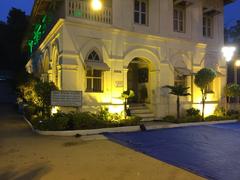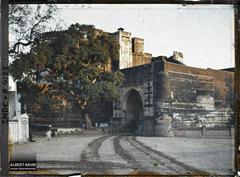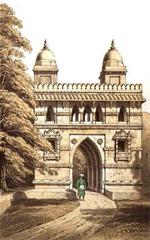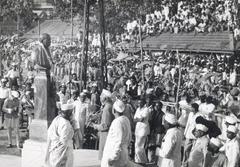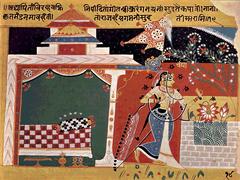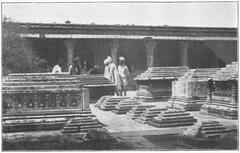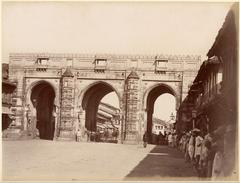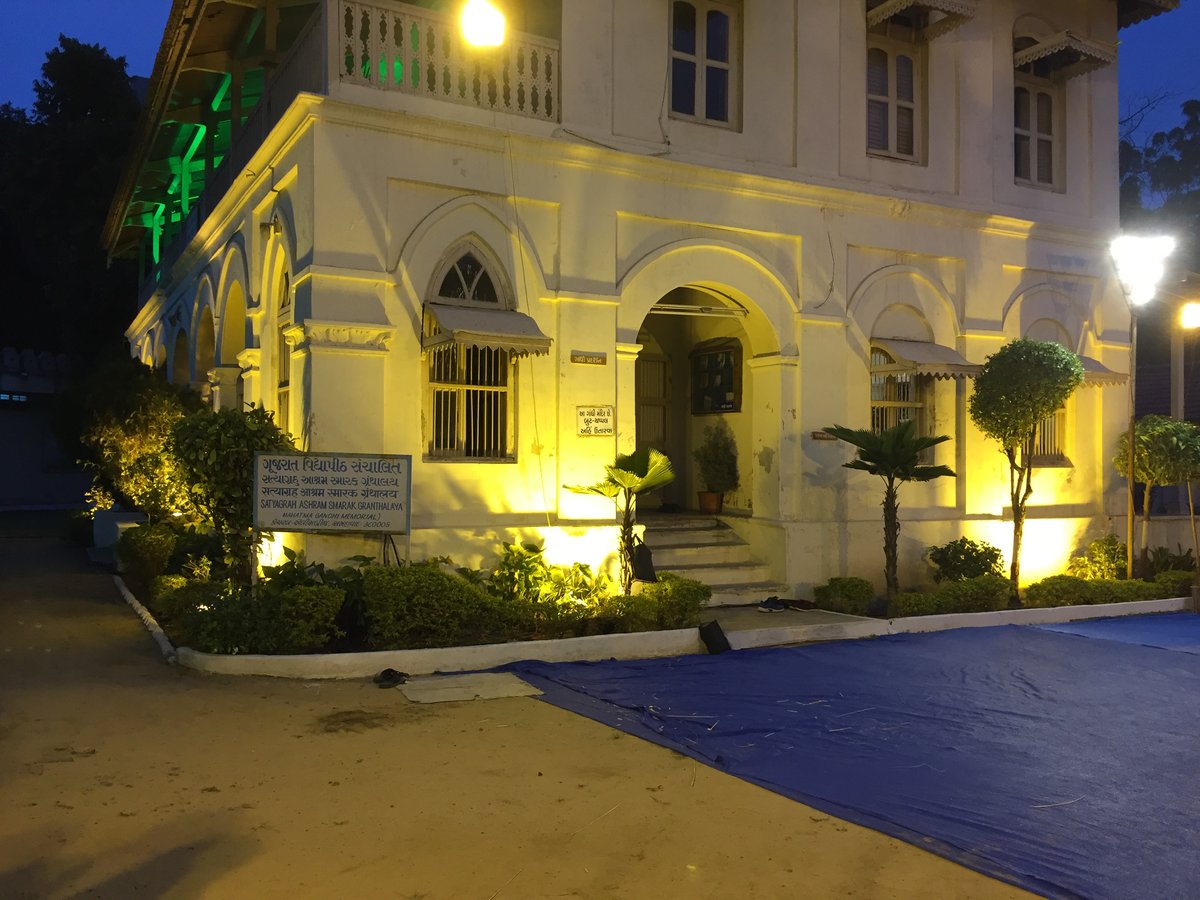
Kochrab Ashram Ahmedabad: Visiting Hours, Tickets, and Historical Guide
Date: 14/06/2025
Introduction
Kochrab Ashram in Ahmedabad, Gujarat, is a landmark of profound historical and cultural significance. Established by Mahatma Gandhi in 1915 upon his return from South Africa, it was the first ashram founded by Gandhi in India and became the birthplace of his ashram movement. Kochrab Ashram served as a living laboratory for the principles of satyagraha (nonviolent resistance), self-sufficiency, and social reform, laying the foundation for India’s freedom movement and Gandhian philosophy. Supported by local visionaries like Ambalal Sarabhai and Jivanlal Desai, the ashram’s commitment to inclusivity, eradication of untouchability, and promotion of khadi became the bedrock for later movements and institutions, most notably the Sabarmati Ashram.
Today, Kochrab Ashram stands as a meticulously preserved heritage and educational center, inviting visitors to explore the roots of India’s independence. With free entry, accessible facilities, and guided tours, it is an essential site for history enthusiasts, scholars, and tourists seeking to connect with Gandhi’s legacy (Vajiram & Ravi, News9Live, The Week).
Historical Background
Foundation and Early Years
Kochrab Ashram was established in May 1915 in the then-outskirts of Ahmedabad, marking Gandhi’s first institutional base in India after his transformative years in South Africa. Supported by local leaders and industrialists, the ashram was set up on a property provided by Jivanlal Desai. The initial residents—around 25 men and women, including Gandhi’s family—embraced a disciplined communal lifestyle focused on self-reliance, social equality, and spiritual development (Vajiram & Ravi).
Principles and Social Experiments
Kochrab Ashram embodied Gandhi’s core values:
- Truth (Satya) and Nonviolence (Ahimsa): Practiced daily through prayer, meditation, and disciplined living.
- Self-reliance (Swadeshi): Residents engaged in agriculture, spinning, and weaving to promote economic independence.
- Social Equality: The ashram was one of the first in India to include Dalits, directly challenging the practice of untouchability and provoking both social resistance and new alliances (Knocksense).
- Education and Service: Schools operated within the ashram, emphasizing literacy, vocational skills, and moral instruction (Wikipedia: Sabarmati Ashram).
Key Events
- Champaran Satyagraha: The ashram was the base from which Gandhi launched the Champaran Satyagraha in 1917, his first major campaign in India, addressing the exploitation of indigo farmers (News9Live).
- Campaign Against Untouchability: Gandhi’s decision to admit a Dalit family into the ashram set a precedent for social reform, despite resulting in the loss of some financial support. Ambalal Sarabhai’s timely donation ensured the ashram’s survival (Knocksense).
Transition to Sabarmati Ashram
By 1917, the growing community and need for agricultural land led Gandhi to relocate the ashram to the Sabarmati riverbank. However, Kochrab’s legacy as the birthplace of Gandhi’s ashram movement has remained central to its identity (Wikipedia: Sabarmati Ashram).
Kochrab Ashram’s Legacy in the Freedom Struggle
Kochrab Ashram became the training ground for satyagrahis (nonviolent activists), influencing later movements and ashrams throughout India. Its pioneering work in social integration and community living laid the groundwork for mass mobilizations like the Non-Cooperation and Civil Disobedience movements (IAS Gyan). The ashram’s constitution, drafted by Gandhi, outlined vows of truth, nonviolence, celibacy, and non-possession, shaping the ethos of the national movement (Knocksense).
Architectural and Cultural Features
The original ashram consists of a white-washed colonial bungalow with Gandhi’s living quarters on the ground floor and a library above. The premises include open prayer grounds, communal kitchen, storerooms, and gardens, all designed to foster simplicity and self-sufficiency (News9Live). The site, currently managed by Gujarat Vidyapith, features a Gandhi Memorial Museum with artifacts such as Gandhi’s writing desk, spinning wheel, and historical photographs.
Visiting Kochrab Ashram: Practical Information
Location and How to Reach
- Address: Kochrab area, near Paldi, Ahmedabad, Gujarat.
- Accessibility: Easily reachable by local bus, auto-rickshaw, taxi, or private vehicle. Approximately 6 km from Ahmedabad Junction railway station and 13 km from Sardar Vallabhbhai Patel International Airport (The Week).
Visiting Hours
- Timings: Daily, 9:00 AM to 6:00 PM.
- Special Days: Hours may be extended during Gandhi Jayanti and other commemorative events.
Entry Fees
- Admission: Free for all visitors. Donations are welcome to support upkeep and educational activities (Manorama Yearbook).
Facilities and Guided Tours
- Guided Tours: Available on request; advance booking recommended for groups.
- Accessibility: Wheelchair-friendly with ramps and smooth pathways.
- Restrooms & Drinking Water: Provided on-site.
- Souvenir Shop: Books, postcards, and handicrafts related to Gandhi and the ashram’s history.
Visitor Tips
- Dress modestly and remove shoes before entering main buildings.
- Maintain silence in prayer and meditation areas.
- Photography is generally allowed outdoors; ask permission for indoor or event photography.
- The ashram is a smoke-free and alcohol-free zone.
On-Site Experience: What to See and Do
- Main Bungalow: Explore Gandhi’s and Kasturba Gandhi’s preserved living quarters with original furnishings.
- Library and Museum: View historical documents, photographs, and personal artifacts.
- Daily Life Exhibits: Learn about ashram routines, community living, and Gandhian principles through interpretive displays.
- Conference Hall: Discover the space where key discussions and planning sessions were held.
- Gardens and Prayer Grounds: Experience the tranquility that inspired Gandhi’s meditative practices.
Nearby Attractions
- Sabarmati Ashram: Iconic residence of Gandhi after Kochrab.
- Jama Masjid & Sidi Saiyyed Mosque: Architectural marvels of Ahmedabad.
- Calico Museum of Textiles: Renowned collection of Indian fabrics and crafts.
- Heritage Pols: Traditional neighborhoods showcasing Ahmedabad’s rich urban history.
Preservation and Recent Redevelopment
In March 2024, Kochrab Ashram underwent significant redevelopment as part of a larger initiative to restore Gandhi-related sites in Ahmedabad. The master plan, inaugurated by Prime Minister Narendra Modi, aims to expand the ashram area, restore heritage buildings, and create modern facilities, including a research library and interpretation centre (The Hans India).
Educational and Cultural Impact
The ashram continues to function as a living classroom for Gandhian philosophy. School programs, guided tours, and archival exhibits enrich visitors’ understanding of Gandhi’s impact. Initiatives to train young guides and introduce thousands of children to the site daily ensure the ashram’s relevance for new generations (The Hans India).
Frequently Asked Questions (FAQs)
Q: What are Kochrab Ashram’s visiting hours?
A: Open daily from 9:00 AM to 6:00 PM.
Q: Is there an entry fee?
A: No, entry is free for all visitors.
Q: Are guided tours available?
A: Yes; prior booking recommended for groups or in-depth sessions.
Q: Is Kochrab Ashram wheelchair accessible?
A: Yes, with ramps and smooth pathways.
Q: What are nearby attractions?
A: Sabarmati Ashram, Jama Masjid, Calico Museum of Textiles.
Visitor Experience and Best Time to Visit
The best time to visit is between November and February, when the weather is pleasant. Early mornings and late afternoons offer a serene experience. The ashram is less crowded than other major sites, making it ideal for quiet exploration (The Week).
Conclusion
Kochrab Ashram remains a vital testament to Mahatma Gandhi’s vision and the founding principles of India’s independence movement. Its role as a pioneering center for community living, social equality, and nonviolent activism continues to inspire visitors. The ashram’s preservation and educational programs ensure its legacy endures, making it a must-visit destination for anyone seeking insight into India’s past and the ideals that shaped its future.
Plan your visit to Kochrab Ashram to immerse yourself in the enduring legacy of the Father of the Nation. Download the Audiala app for guided tours, and follow us on social media for updates on Ahmedabad’s historical sites.
References & Further Reading
- Kochrab Ashram Visiting Hours, Tickets & Historical Significance in Ahmedabad, 2025, Vajiram & Ravi
- Kochrab Ashram Historical Overview, 2025, News9Live
- Kochrab Ashram Visitor Guide, 2025, The Week
- PM Modi inaugurates Kochrab Ashram redevelopment, 2024, The Hans India
- Kochrab Ashram Historical Significance and Legacy, 2025, Knocksense
- Manorama Yearbook Kochrab Ashram Explained
- IAS Gyan Kochrab Ashram
